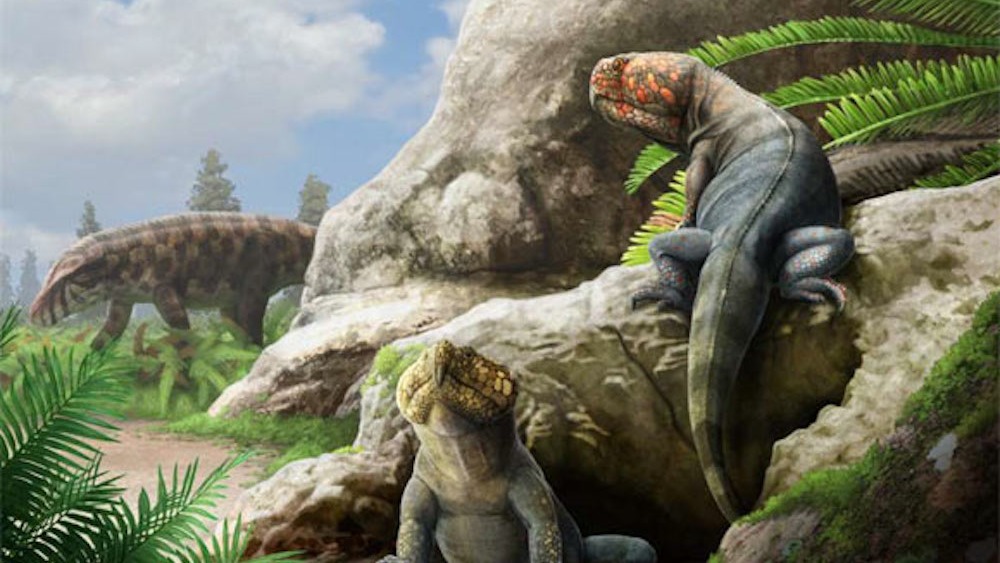
During the late Triassic period roughly 230 million years ago, a squat reptile with a beak-like mouth lived in what is now Wyoming.
Paleontologists identified the remains of the herbivorous reptile, which is a stem, or early archosaur and therefore a distant relative of modern-day birds and crocodiles, as a new genus and species of rhynchosaur, a group of plant eaters defined by their parrot-like beaks. The team described the newly identified species, which they dubbed Beesiiwo cooowuse, in a study published April 10 in the journal Diversity.
"Beesiiwo was not particularly big," co-author David Lovelace, a vertebrate paleontologist at the University of Wisconsin-Madison, told Live Science in an email. He estimates that an adult probably weighed between 10 and 15 pounds (5 to 7 kilograms) and was roughly 2 feet (0.6 m) long.
Researchers can only speculate the specific plants that it ate.
"We do know from paleo pollen and plant remains that there were definitely conifers, ferns and horsetail plants around that may have contributed to its diet," Lovelace said. Its beaked mouth "could very well have been used for stripping or clipping leaves, but again, there is no direct evidence of this that I know of."
Related: Tiny ancient reptile named after Thor's world-ending nemesis
In total, paleontologists unearthed five rhynchosaur specimens at the Popo Agie Formation, a Triassic geological formation located in the Bighorn Mountains, part of the northern Rocky Mountains. Three of the specimens, including fragments of upper and lower jawbones, belonged to the new species.
Because the fossils were located on Native American land, the researchers partnered with leaders from the Northern Arapaho Tribal Historic Preservation Office to name the new species Beesiiwo cooowuse, which, in the Arapaho language, means "big lizard from the Alcova area" of central Wyoming, according to a statement.
The naming is part of a collaboration among the Arapaho people, students from Fort Washakie Schools (FWS) located on the Wind River Indian Reservation and the university to decolonize paleontology. Despite the abundance of fossils discovered in the American West, it's the first time a specimen found on Native land has been named in the Arapaho language.
"This is an exciting place to do fieldwork because this geological formation hasn't really been studied in nearly a century," Lovelace said in the statement. "We get this multicultural, multigenerational interaction in the field where elders, FWS students, UW-Madison students and scientists are all working together to integrate Western science, Native science and traditional ecological knowledge."







